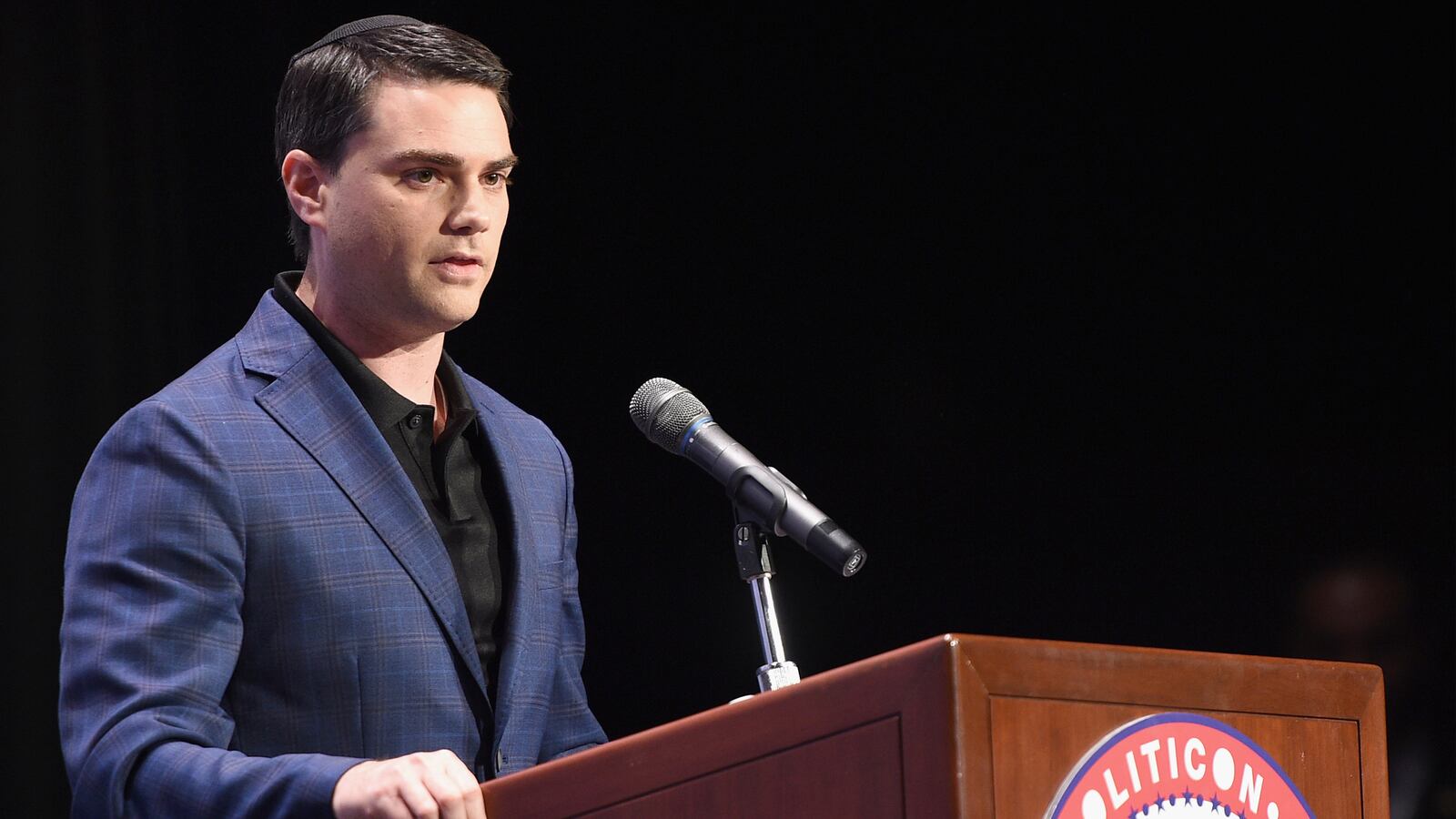It cost more than $600,000 for security so that Ben Shapiro could safely deliver a fairly conventional conservative speech at UC Berkeley on Thursday night. During the 2016 presidential campaign, Shapiro (an orthodox Jew and #NeverTrump conservative) was heavily targeted with anti-Semetic attacks by the alt-right. He was nevertheless greeted on the Berkeley campus by signs calling him a “white supremacist.”
This was just one more example of how the assault on free speech at America’s college campuses has become pervasive. You’ve probably heard of last year’s high-profile incidents at Middlebury College, Evergreen State College, and (yes) U.C. Berkeley, but these examples are merely the ones that got national attention.
To get a better perspective on the problem, I reached out to Madison Faupel, who interned for my wife this summer. Instead of perspective, I got a first-hand testimonial.
She’s the president of the University of Minnesota's College Republican chapter. Her group sparked controversy last fall when it reserved space and painted a mural on the Washington Avenue Bridge to promote their student group.
Her group settled on three slogans: “College Republicans, The Best Party on Campus,” “Trump Pence 2016,” and “Build the Wall.”
Within an hour, the panels had been vandalized, and protesters had surrounded the panels. Some of the vandalism included the following statements: “STOP WHITE SUPREMACY NOW” and “Hate Speech is not Free Speech.”
The notion that Madison is a white supremacist is about as laughable as the notion that Ben Shapiro is one. In their insistence on tolerance, leftists are increasingly intolerant of anyone who may not like their choice of candidate or political ideas. The charge of "racism" is becoming an easy way to shut down robust political discussion.
Supporting a border wall might be politically incorrect, but it hardly qualifies as “white supremacy” or “hate speech.” Moreover, a border wall does not, in and of itself, denote anti-immigrant sentiment. One can be pro-immigrant—and also believe that a nation must vigorously control its borders. That’s what Madison told me when I asked her why she included the provocative mural.
But frankly, I would be defending her group’s right to post the slogan regardless. College is at least partly about encountering diverse ideas, and free speech is inherently about protecting unpopular speech—especially political speech. Regardless of how you feel about building a wall (I'm against the idea), the president ran (and won) advocating it—and the House recently voted to fund it. This is not an idea wildly outside he political mainstream. In 2006, Democrats like Hillary Clinton supported a border fence. Like it or not, it's a legitimate policy debate.
As the protests grew, so did violent threats against the College Republicans and Madison, in particular. The group's members were scared for their safety on campus. Madison and the rest of the executive board didn’t go out at night and tried to never be alone on campus. Many used campus security to walk home.
Rather than condemning vandalism and standing up for the First Amendment right of freedom of speech, many supposed adults in the administration instead lashed out at the College Republicans. Heather C. Lou, assistant director of the Multicultural Center for Academic Excellence, said that the panel included a “xenophobic and racist” statement and that “the UMN bias incident team has been contacted.”
Catherine Squires, communications professor and director of the Race, Indigeneity, Gender and Sexuality Studies Initiative, encouraged faculty members to get involved, “especially faculty of color—many of us have been through these sorts of situations when we were students.”
The College of Education and Human Development sent out a college-wide e-mail stating: “The rhetoric and xenophobic messaging negatively impacts many of our Latino students, immigrants, and others who see this as an act of hate against non-whites.”
University officials were essentially inciting anger toward a young, female student who pays tuition.
The University of Minnesota did call for a “Campus Climate” conversation about the recent controversial events, but this, too, devolved into chaos. About 15 minutes into the event, more than 200 protesters came into the room chanting, “Hey hey, ho ho, racism has got to go,” surrounding those students who had come to the event to engage in a civil conversation.
The protesters took over the stage as the student body president stood at the front of the room with her fist in the air, leading the chants. Students took turns lamenting how their feelings were hurt, how writing “Build the Wall” amounts to hate speech, and how they want to be included in conversations on campus. At the end of the event, one of the protesters stood on stage and asked the crowd if any College Republicans had attended. Madison stood up and raised her hand.
When the “event” ended, she was swarmed by the mob. “They were completely surrounding me; I was unable to leave the event. They were screaming in my face calling me racist, xenophobic, and other unmentionable names. They were aggressive, and I just wanted to get out safely,” said Madison. “One girl was holding another girl back saying, ‘She’s not worth it. Don’t hit her.’”
Later in the year, the radical left struck her again. Madison runs the University of Minnesota’s chapter of Turning Point USA, a nonpartisan group that promotes fiscal responsibility, free markets, and limited government. Members of the loosely organized far-left militant group Antifa targeted her for promoting capitalism on campus, posting online her address, phone number, parent's address, parent’s phone number, a photo of her, and a reference to her as an alt-right Nazi.
“I endured a lot of violent threats throughout the year, but Antifa’s attack was the scariest,” said Madison. “When I was out in public I received messages that they were watching me, that they would continue to come after me until I stopped my ‘leadership of bigotry and hate,’ and that they were ‘on my ass.’ I was very scared to be home because they knew where I lived, but I was also scared to be in public because they claimed they were watching me.”
What may be most amazing about Madison’s story is that it is not so remarkable. It wasn’t a national news story, or even much of a local one—just another example of conservatives engaging in free speech on college campuses doing so at their own peril.
This, as many campus administrations create environments that allow for the silencing of ideas that differ from their ideology. The result is that conservatives and their ideas are not safe on too many college campuses—even in Minnesota.





